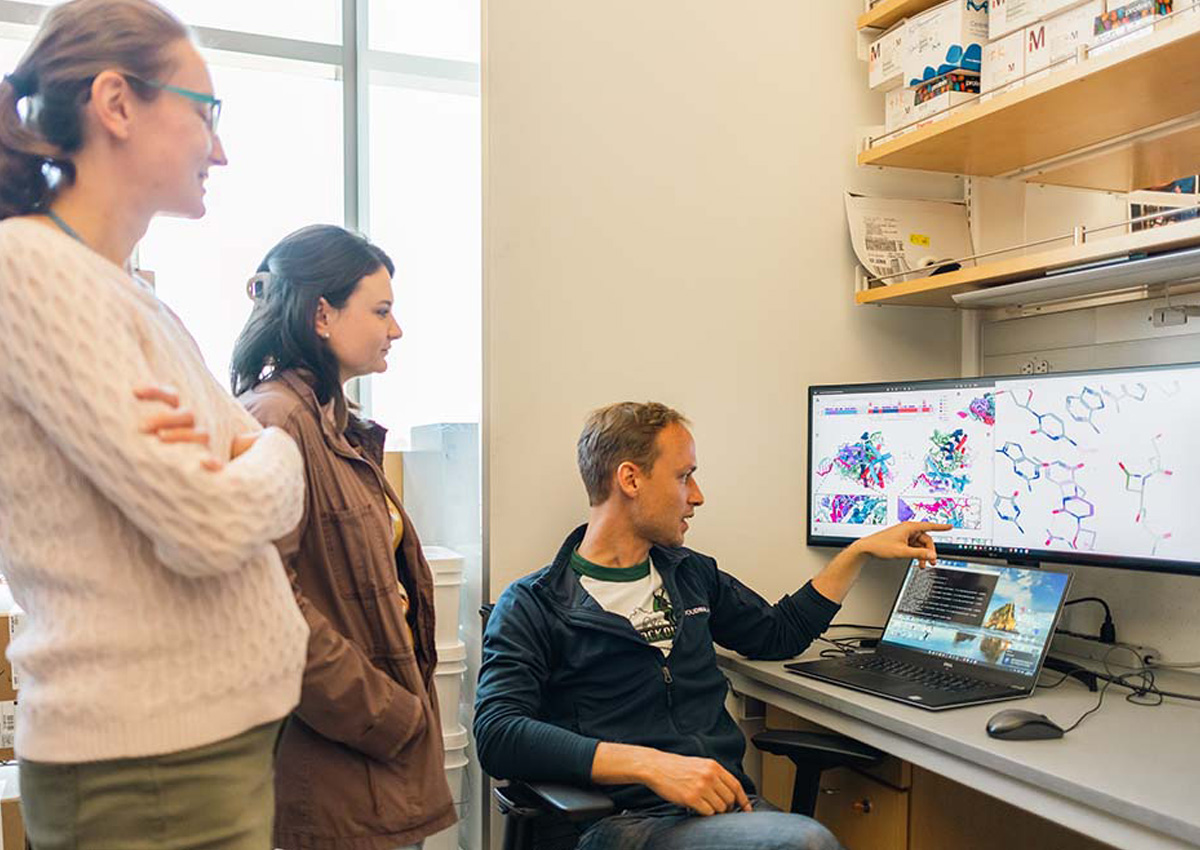
Scientists Find New Compact Genome Editors in Viruses
December 14, 2022| |
In 2020, researchers at the Innovative Genomics Institute (IGI) found a CRISPR-Cas system inside a virus, an unlikely place to find it. Now, a collaboration between multiple IGI investigators at the University of California Berkeley and the University of California Los Angeles reports that the diversity of CRISPR systems in viruses that infect bacteria (bacteriophages or "phages" for short) is far richer than expected and could be a valuable source of new and efficient genome editors for use in humans, plants, and other organisms.
First author Basem Al-Shayeb from the Banfield and Doudna labs suspected that he would find CRISPR systems in phages and that they could be useful for genome editing. In 2020, the team found CRISPR systems in "megaphages." While the phages were huge for viruses, the Cas proteins were tiny relative to the widely used Cas9 protein from bacteria. The team was able to adapt this new protein called CasΦ (Cas-phi) for gene editing in mammalian and plant cells.
For the new paper, Al-Shayeb and colleagues conducted a broader survey across bacteriophages using metagenomic analysis of soil, aquatic, human, and animal microbial samples and found an unexpected diversity including all six known types of CRISPR systems spread across over 6,000 types of phages, not just megaphages. Like CasΦ, these newly identified Cas proteins were all super compact compared to those found in bacteria. The team focused on a unique and particularly small protein with a structure unlike any other previously described, which they call Casλ (Cas-lambda). They found that Casλ's structure is distinct from any known Cas proteins, including the other viral hypercompact nuclease CasΦ. The team then tested Casλ in the lab to edit the genomes of mammalian and plant cells and compared its efficiency against Cas12a. Without any additional engineering, Casλ performed well across the different cell types.
Even with this broader survey, the hunt for better gene editors and other useful genomic tools is far from over. "There's always more to explore," says Al-Shayeb. "That's the fun of it."
For more details, read the news article on the IGI website.
| |
You might also like:
- Experts Enhance Editing Rates of CRISPR-Cas12a
- Controllable Auto-Excision Now Possible with CRISPR-Cas9
- New Technique Improves Gene Editing Efficiency While Reducing DNA Deletion Sizes
Biotech Updates is a weekly newsletter of ISAAA, a not-for-profit organization. It is distributed for free to over 22,000 subscribers worldwide to inform them about the key developments in biosciences, especially in biotechnology. Your support will help us in our mission to feed the world with knowledge. You can help by donating as little as $10.
-
See more articles:
-
Gene Editing Supplement (December 14, 2022)
-
Research and Tools
- Low-cadmium Rice Developed Using CRISPR-Cas9
- Study Reveals Role of Wild Soybean Protein Kinase in Abiotic Resistance of Plants
- The Volcani Center Researchers Develop Gene-Edited Hens to Stop Male Chicken Slaughter
- First Gene-edited Calf Developed to be Less Susceptible to BVDV
- Scientists Find New Compact Genome Editors in Viruses
-
Policy Considerations and Approvals
- European Academies Form Task Force on Intellectual Property System for NGTs
-
Read the latest: - Biotech Updates (December 17, 2025)
- Gene Editing Supplement (December 17, 2025)
- Gene Drive Supplement (February 22, 2023)
-
Subscribe to BU: - Share
- Tweet

